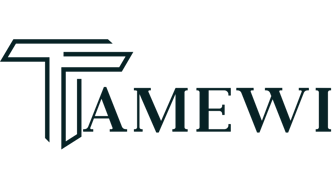
How to Build a Content Strategy That Doesn’t Burn You Out
Tired of overcomplicated content plans? This blog breaks down a simple, sustainable content strategy tailored for solopreneurs. Learn how to plan, create, and publish consistently without burnout—plus how AI tools can help streamline your workflow.
USEFUL RESOURCES
10 min read


How to Build a Content Strategy That Doesn’t Burn You Out
As a solopreneur, managing your workload and keeping a steady online presence can feel like a lot. It's key to have a effective content plan to avoid burnout and meet your business goals.
A good content strategy keeps you organized, connects with your audience, and brings results. By using solopreneur tips and best practices, you can make a content plan that grows your business without exhausting you.
Key Takeaways
Create a content calendar to plan and organize your content
Set realistic goals and prioritize tasks to avoid burnout
Repurpose and update existing content to maximize ROI
Engage with your audience to build a loyal following
Monitor and adjust your content strategy regularly
The Solopreneur's Content Dilemma
Solopreneurs often face a big challenge in content creation. It can take up a lot of time and energy. They have to do many things on their own, and making content is a big part of that.
Why Content Matters for Your Business Growth
Content is key for any business, especially for solopreneurs. It helps build their brand and attract customers. A good content strategy can increase engagement and trust, leading to growth.
For solopreneurs, content sets them apart. It shows their skills, connects with people, and helps them stand out.
The Hidden Costs of Content Creation
Creating content has hidden costs that solopreneurs might not see. It takes time to research, write, edit, and publish. Keeping up a regular schedule can also be very tiring.
Content TypeTime CostMonetary CostBlog Post5 hours$100Social Media Post1 hour$20Video Content10 hours$500
Knowing these costs helps solopreneurs plan better. It helps them make a blog planning process that works.
Signs Your Current Content Approach Is Unsustainable
Even the most organized solopreneurs can face hidden dangers in their content strategy. Managing multiple roles and the need to constantly create content can lead to burnout. It's crucial to manage this pressure well.
Physical and Mental Warning Signs
Ignoring the physical and mental effects of content creation can be harmful. Common signs include:
Prolonged periods of fatigue
Difficulty concentrating on tasks
Increased irritability and stress levels
Spotting these signs early can help you adjust your content strategy. This can prevent further burnout.
Business Impact of Creator Burnout
When solopreneurs burn out, their business often suffers. The effects can be seen in:
Area of ImpactConsequences of BurnoutContent QualityDecreased quality and engagementProduction ConsistencyInconsistent posting schedulesBusiness GrowthStagnation due to lack of innovative content
The Cycle of Inconsistent Content Production
Inconsistent content production can create a tough cycle to break. This cycle includes:
Initial enthusiasm and high-quality content
Gradual decline in quality and frequency
Loss of audience engagement and interest
Frantic efforts to regain momentum, leading to burnout
To break this cycle, you need a strategic approach to content creation. Focus on sustainability and quality over quantity.
Fundamentals of a Content Strategy for Solopreneurs
Creating a successful content strategy as a solopreneur means knowing your content's purpose. It should match your business goals. A good content strategy helps solopreneurs connect with their audience well.
Defining Your Content Purpose and Goals
First, figure out why you're creating content. Do you want to teach, entertain, or convince your audience? Having clear goals helps you create better content. For example, if you want to sell more, your content should help leads move through the sales process.
Clear goals lead to focused content. This focused content improves engagement and sales.
Aligning Content with Business Objectives
Your content strategy should reflect your business goals. Match your content themes, formats, and channels with what grows your business. If you aim to be seen as a leader, create insightful, informative content that shows your knowledge.
Strategic alignment makes sure each piece of content has a purpose, not just to be published.
The 80/20 Principle in Content Planning
The 80/20 principle helps you focus on the best content. It's about finding the 20% of your content that gets 80% of the results. By analyzing your content, you can make your strategy better and save time.
Focus on high-value content to get big results with less effort.
In summary, a strong content strategy for solopreneurs is about clear goals, aligning content with business goals, and using the 80/20 principle. By following these steps, solopreneurs can build a content ecosystem that helps their business grow.
Audience-First Planning: Creating Less Content with Greater Impact
To make your content more impactful, focus on your audience first. This means understanding and meeting their needs. Your content should resonate with them and encourage meaningful interaction.
Developing Detailed Audience Personas
Creating detailed audience personas is key. You need to know your ideal customers' demographics, preferences, pain points, and behaviors. This knowledge helps you tailor your content to their specific needs.
For example, a fitness solopreneur might create personas for beginners and advanced athletes. This targeted approach ensures your content is highly relevant and valuable.
Identifying High-Value Content Topics
With a clear understanding of your audience, identify high-value content topics. These topics should be relevant to your audience and align with your business goals. They address specific needs or pain points, providing significant value.
To find these topics, do keyword research, analyze customer feedback, or monitor industry trends. For instance, a financial advisory solopreneur might focus on budgeting tips, investment strategies, or retirement planning. These topics are relevant and showcase their expertise.
Content Formats That Deliver Maximum ROI
The format of your content greatly affects its impact. Different formats appeal to different audience segments. Choosing the right format is crucial for maximizing ROI. Formats like in-depth guides, video tutorials, podcasts, and infographics are often high-impact.
Content FormatAudience PreferenceROI PotentialIn-depth GuidesThose seeking comprehensive informationHighVideo TutorialsVisual learners and those preferring step-by-step instructionsMedium to HighPodcastsAudience on-the-go, preferring auditory contentMediumInfographicsThose who process information visuallyHigh
By knowing your audience's preferences and behaviors, you can choose the most effective formats. This targeted approach boosts your content's impact. It also aligns your efforts with your business goals, leading to a sustainable content strategy.
Building Your Content Calendar Without Overwhelming Yourself
Creating a content calendar that fits your needs is key. As a solopreneur, managing your content well can help you stay consistent or avoid burnout.
Realistic Publishing Cadences for Solopreneurs
Finding a realistic publishing schedule is crucial. Solopreneurs should think about their capacity and how their audience will react. This helps decide how often to post.
Start with a manageable frequency, such as weekly or bi-weekly posts.
Adjust your schedule based on feedback and performance metrics.
Prioritize quality over quantity to maintain audience engagement.
Batch Creation vs. Just-in-Time Production
Solopreneurs must choose between batch creation and just-in-time production. Batch creation means making many pieces of content at once. Just-in-time production means making content as it's needed.
Think about the benefits of each:
Batch creation can reduce stress and save time in the long run.
Just-in-time production allows for greater flexibility and adaptability.
Incorporating Buffer Time and Flexibility
Adding buffer time to your content calendar is vital. It helps with unexpected tasks or opportunities. This makes your content strategy more adaptable and resilient.
To use buffer time well:
Set aside part of your calendar for unscheduled content or emergencies.
Regularly review and adjust your calendar to match changes in your strategy or business.
Use AI content workflow tools to make your content creation smoother and more flexible.
By making a content calendar that's realistic, flexible, and fits your strategy, solopreneurs can keep a steady online presence without getting burned out.
Streamlining Your Content Creation Workflow
Streamlining your content creation can help solopreneurs grow faster. It makes creating high-quality content easier without hurting your well-being.
Creating Reusable Content Templates
Reusable templates are a great way to make content creation faster. They work for blog posts, social media, and emails. This saves time and lets you focus on your message.
For example, a blog post template with intro, main content, and conclusion makes writing easier. You can also use templates for social media to keep your brand consistent.
Setting Up Content Production Systems
A content production system can make your workflow more efficient. It involves tools and processes for creating, publishing, and promoting content. This ensures you produce content regularly without getting overwhelmed.
Using a project management tool for your content calendar or an editorial calendar for planning can help a lot. It streamlines your production process.
Time-Blocking Techniques for Content Creation
Time-blocking is a useful technique for better content creation. It involves setting specific times for different tasks. This boosts efficiency and avoids multitasking, which can slow you down.
For solopreneurs, setting aside days for specific tasks helps keep a schedule. For example, write blog posts on Mondays and social media on Tuesdays. This keeps you consistent and flexible for unexpected tasks.
Implementing an AI Content Workflow That Preserves Quality
Solopreneurs face a complex world of content creation. Using AI can change the game. It boosts their content strategy, making it more efficient and effective.
AI Tools for Research and Ideation
AI changes the game in research and idea generation. Natural language processing (NLP) analyzes data to find trends and suggest topics. These topics are likely to connect with the audience.
Trend analysis
Topic suggestion
Content gap identification
AI tools help solopreneurs find out what their audience wants. This lets them create content that meets those needs.
Creating Effective AI Prompts for Content Generation
Creating good prompts is key for AI content. It's about knowing what the AI can do and what it can't.
"The key to successful AI content generation lies in the quality of the input prompts."
Content Expert
Good prompts are clear, specific, and fit the content strategy. Solopreneurs should try different prompts to see what works best for their brand.
Human Editing and Quality Control Processes
AI can create content, but humans must check it for quality and consistency. This includes keeping the brand voice and checking facts.
Maintaining Your Brand Voice
AI content should match the brand's tone and personality. Human editors are key in making sure it does.
Fact-Checking AI-Generated Content
AI might get facts wrong. It's crucial to fact-check AI content to keep trust with the audience.
Content AspectAI RoleHuman RoleResearch and IdeationTrend analysis and topic suggestionReviewing and refining AI suggestionsContent GenerationGenerating content based on promptsEditing and refining AI-generated contentQuality ControlInitial draft creationFact-checking and ensuring brand consistency
By using AI and keeping human oversight, solopreneurs can make a content strategy that's both sustainable and high-quality. This approach boosts efficiency without sacrificing quality.
Content Repurposing: Do More With What You've Already Created
Content repurposing turns one piece of content into many. It's great for solopreneurs who wear many hats. It makes creating content more efficient.
Using content repurposing, solopreneurs can improve their blog planning. They create a plan to use one piece of content on different platforms. This way, they reach more people and make a bigger impact.
The One-to-Many Content Framework
The one-to-many framework is key to repurposing content. It breaks down big content into smaller, easier pieces. These pieces can go on social media, email, and blogs.
For example, a solopreneur can split an eBook into social media posts. Each post covers a different part of the topic. This way, more people see the content and learn in different ways.
Cross-Platform Content Adaptation
It's important to make content fit each platform. What's good on a blog might not work on social media or email. Solopreneurs can make their content better by tailoring it for each place.
Turn blog posts into social media content.
Make webinars into written or video content.
Create infographics from report highlights.
Updating and Refreshing Existing Content
Refreshing old content is also part of repurposing. It means updating it with new info or views. This keeps the content fresh and relevant, and opens up new ways to share it.
By using these strategies, solopreneurs can get more out of their content. They can share their message with more people without spending more time or money. Smart repurposing makes your content work harder for you.
Measuring Content Performance to Focus Your Efforts
Measuring content performance is key for solopreneurs. It helps you know what works and what doesn't. This way, you can make your content strategy better and avoid burnout.
Key Metrics That Actually Matter for Solopreneurs
Not all metrics are important for solopreneurs. Focus on those that help your business goals. For example:
Engagement rates (likes, comments, shares)
Conversion rates (leads, sales, sign-ups)
Website traffic
Email open and click-through rates
MetricDescriptionWhy It MattersEngagement RateMeasures how actively your audience interacts with your content.High engagement shows your content is relevant and effective.Conversion RateTracks the percentage of visitors who complete a desired action.Directly impacts your bottom line by driving sales or leads.Website TrafficThe number of visitors to your website.More traffic can lead to more opportunities for engagement and conversion.
Simple Analytics Tools That Don't Require Data Expertise
Solopreneurs don't need to be data experts. Tools like Google Analytics, SEMrush, and HubSpot are easy to use. They help track key metrics. For example, an AI content workflow can make analytics easier by giving insights and automating reports.
Using Performance Data to Refine Your Strategy
Once you have data, use it to make smart decisions. Find out what content types, topics, and channels work best. Then, focus more on those areas.
Also, stop or change content that doesn't do well. This way, you can make your content strategy more effective. It will help you achieve your goals without exhausting yourself.
Conclusion: Your Sustainable Content Ecosystem
Creating a content strategy that doesn't burn you out is possible. Focus on your audience first. Build a realistic content calendar and streamline your workflow.
Use solopreneur tips like repurposing content and AI tools to boost your strategy. Good blog planning means making less content but with more impact.
Measuring content performance and refining your strategy leads to long-term success. A well-planned strategy helps solopreneurs stay consistent, engage their audience, and grow their business without losing their well-being.
FAQ
What are the most common signs of burnout for solopreneurs creating content?
Signs include physical exhaustion and mental fogginess. Solopreneurs may also feel less motivated. They might notice a drop in content quality.
They might struggle to keep up with content, hurting their business.
How can solopreneurs define their content purpose and goals effectively?
Solopreneurs should match their content strategy with their business goals. They need to know what they aim to achieve. This could be more brand awareness or more website visits.
What is the 80/20 principle in content planning, and how can it be applied?
The 80/20 principle means 80% of results come from 20% of efforts. In content planning, focus on the most impactful content. This helps solopreneurs optimize their strategy.
How can AI be used in content workflows without compromising quality?
AI can help with research and content generation. But, it's important to have humans check the quality. They ensure the content is accurate and fits the brand's voice.
What are some effective ways to repurpose content for maximum ROI?
Repurpose content by turning one piece into many formats. Adapt it for different platforms. Update it to keep it relevant. This maximizes its value.
What key metrics should solopreneurs track to measure content performance?
Track metrics that match your business goals. This could be engagement rates, website traffic, or lead generation. It helps understand if your content is working.
How can solopreneurs create a content calendar that is realistic and manageable?
Set realistic publishing schedules. Consider batch or just-in-time production. Add buffer time for flexibility and unexpected changes.
What are some simple analytics tools that solopreneurs can use without requiring data expertise?
Tools like Google Analytics offer insights without needing data skills. They help solopreneurs make better content decisions.

